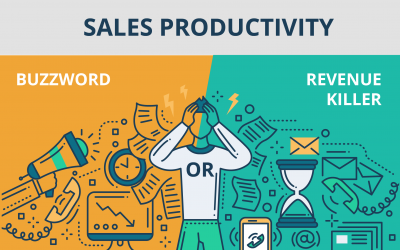No Results Found
The page you requested could not be found. Try refining your search, or use the navigation above to locate the post.

Many companies are feeling the pressure. If you don’t want to get left behind, there’s one number you need to focus on: 22.
Imagine the effect on your bottom line if you could boost that percentage.
Say your average sales rep brought in R10 million last year. If you increased their percentage selling time from 22% to 26% the knock on effect would have been an extra R1.1m. That’s an 11% increase in sales.
But this isn’t just theory, many companies are doing just this.
Analyst, Forrester says that if you switch to an integrated sales solution your sales reps will each get back 53 minutes a day. Think of the effect this has on their selling time. 22% goes up to 33% – enough to significantly worry your competition!
While the numbers are clear, the question you need to ask yourself is: Can you afford not to do this?
Think of the impact if your competitors did this and you didn’t. What sales would you be leaving on the table?
“We saw our sales teams spending upwards of 40% of their work week doing admin tasks. That number is now approaching 10% because we can do things in an integrated fashion, from wherever and whenever there’s an opportunity.”
19% increase in productivity
Sales professionals gained 19% in productivity by being able to access client data anywhere and anytime.
The page you requested could not be found. Try refining your search, or use the navigation above to locate the post.
Discover More Stories

It doesn’t take an economist to see that we’re in a tough spot. The shops are empty. People – and businesses – are under huge pressure.
Will things get better? While they say that time heals all, the fact is that market downturns mean deep economic recalibration – there will be winners and losers at the end of this. It’s scary, but it’s true.
The better news? It’s possible to emerge even stronger on the other side.
So strap in, hold on and commit.

It may seem counterintuitive, but when times are tough, resist the urge to do more. Instead, get back to basics – focus on your business’s core. Do fewer things, but do them right! Boom times allow for the growth of fluff, while recessions reveal the real revenue drivers. Exploit this opportunity to identify them.
Tough times reveal the products and services that are your business’s bedrock – direct your energy there.

New customers? Be crystal clear on your targets for new acquisitions – come one, come all isn’t a strategy to deploy when the market is making life difficult.

By driving efficiencies in this part of your business, you’ll free yourself up to add value elsewhere.

Automation can give people the time they need to focus on sales. When back-office processes are taken care of, there’s no need to sit in the office crunching through admin. You can work from anywhere, knowing those aspects of business are taken care of.

Smart software that integrates machine learning techniques can help streamline the process and power intelligent decisions.
Need a report? You should be able to grab one instantly.

The second? Stop customers from straying. You can do this, for example, by introducing a sub-brand, which customers can cancel their use of later.

Secondly, get social. Go where your customers are and get your customer mix right. Closeness with the right customers has never been more important than right now.

With your admin and reporting under control, this becomes far easier. You have both the time and the necessary tools to make revenue generation a top priority.
What we can change is how we react.
The page you requested could not be found. Try refining your search, or use the navigation above to locate the post.

“Microsoft delivers on intelligent seller productivity.” – Forrester 2017 Q2 report
The Satya Nadella Treatment
You might ask yourself what has given Microsoft the edge? While they have invested heavily in machine learning/artificial intelligence, and the now famous acquisition of LinkedIn, Forrester put it down to a “heightened focus on seller productivity”.
Sales software has traditionally focused on reporting and analytics. But with deep integration into Outlook, Microsoft has made it possible for sales reps to more productive on the go. Simple things such as not switching between apps has recently been shown to have a massive impact on revenue.
Forrester concludes:
“Microsoft is a best fit for companies looking to capitalize on the productivity gains of their other Microsoft cloud investments” – which is fairly obvious. But interestingly, they go on to say:
“..and those companies that are …looking to disrupt their peers with AI and machine learning”
Sales teams across the globe are already disrupting their competitors with Microsoft’s new Dynamics 365 platform, but ironically, this disruptive ability is already being felt by Microsoft’s own competitors.
If you want to find out more, why not check out: Office 365 & Dynamics 365
[1] John Bruno, The Forrester Wave: Sales Force Automation Solutions, Q2 2017 (Forrester)
The page you requested could not be found. Try refining your search, or use the navigation above to locate the post.
Discover More Stories

Sounds like strange advice in the current market, doesn’t it? It shouldn’t. When times get tough, many make the mistake of losing confidence. They focus inwardly, looking to consolidate what they have, rather than outwardly: on what could be. This is unnecessary self-sabotage!
Rather: vision, guts and a little ingenuity can make all the difference, separating the winners from the losers.
A major opportunity every business should be exploiting is this: Creating extended sales teams. By viewing everyone in your business – yes, everyone – as a salesperson, you immediately increase your sales potential.
Selling is no longer about the gift of the gab – it’s about building trust. And that means that everyone in your business can – and should – sell.
In fact, those people who already work for you are actually in the best position to do so. For example, who better to up-sell a deal than a service technician who is always on the front-line delivering to customers?
It’s true – not everyone understands the world of sales. So, sales managers may need to step in to provide guidance at first – showing those new to the process how to identify opportunities. Putting incentive structures in place is key too, as it will change the behaviour people have in seeking out new sales avenues.
The first step? Focus on your service people. Service teams interact with clients every day, throughout every stage of the post-sales cycle. That interaction equates to trust – trust that’s been built up over time. Here are a few ideas on how to leverage their abilities:
Create referrals – Referral leads convert at a higher rate than typical leads. Not only that, but referred customers tend to spend more. If you’re not exploring this avenue with your service people, you may be losing out.
Ask for customer feedback – Develop a culture of gathering (and sharing!) feedback. Use that information to learn and grow. Ask your marketing team to develop a set of key questions, then get your service people involved deployment. Use the feedback gathered to help improve both your product development and sales processes. Your service people are on the ground – they can access insights others simply can’t. Change what needs to be changed on the basis of what you discover and, if need be, rethink your approach. Also, share the changes you made with customers who gave you the feedback in the first place. They will feel appreciated and are more likely to give you more feedback in the future.
Cross-sell, up-sell and even down-sell – Have a client with a basic plan or product? Get your service teams to ask well thought through, quality questions; they understand customer needs and pain points better than anyone else. This means they’re best positioned to make recommendations about how customers can access better services. Don’t discount down-selling either: if a client is wavering, a basic plan can be a way of retaining their business, with the potential for growth in future.
Capitalise on online chat – The market has changed. Digitisation, fluidity and instant communication are the order of the day. Customers have come to expect fast responses and real-time interactions. The right person providing the right information online can both improve customer experience and shorten the sales cycle.
There was a time when marketing teams simply handed over leads to sales. Those days are gone. Now, marketing is operating ever further into the entire sales cycle, taking customers ever deeper into the journey.
This means that your marketing teams are increasingly important to the sales process. It also means that they need to be more knowledgeable about sales (and how your business runs) than ever. Here are a few tips:
Here’s the key: customers are not only the people you sell to. They’re also the people who can help you sell.
Customers can be a great source of new sales leads. Leverage your customers’ networks to explore new opportunities and open new doors. If you’ve worked well with a customer and developed rapport, you’re well positioned to ask for references into other business units or departments in their company.
Existing customers can also be extremely effective last-inning closers too. If there’s a deal in the pipeline or a lead who’s on the verge of buying – but who is not yet quite convinced – ask an existing customer to help close the deal. ‘My experience with the company was great’ is often just that little bit more effective as a sales tool than ‘Your experience with our company will be great’.
Sales is no longer about smooth talking – it’s about building trust and long-lasting, mutually beneficial relationships with customers. With a little guidance and the right incentive structures in place, you can empower anyone in your business to build and grow the kind of connections every successful business needs.
The page you requested could not be found. Try refining your search, or use the navigation above to locate the post.
Discover More Stories

In our post, Microsoft Overtakes Salesforce.com, we shared an important market shift: Global analyst Forrester placed Microsoft ahead of Salesforce.com for the first time.
This is hugely significant. To understand this trend, we asked our customers why they chose Dynamics 365 over Salesforce.
Here were their top 6 reasons:
Most companies already use Microsoft’s products: Word, PowerPoint, Excel, Outlook etc. So, it’s no surprise that Microsoft is the leader in integrating those technologies with Dynamics 365.
Our customers love the fact they can work in Dynamics 365 without leaving Outlook. With Office 365 and Dynamics 365 built on the same common data model and hosted together on Azure, your data couldn’t be more integrated. And with Microsoft’s purchase of LinkedIn, LinkedIn’s powerful Sales Navigator syncs directly with Dynamics 365.
While Salesforce also offers integration with Outlook, Exchange, LinkedIn etc. our customers said that the integration was more difficult and limiting in terms of functionality.
Our customers are being asked if they are seeing value in their technology investments – if it’s having an impact on their bottom line.
This is something Microsoft is very strong in. Feature-by-feature, analysts consistently find little to choose between Dynamics 365 and Salesforce. But when it comes to the price of those features, there is no comparison. Microsoft is consistently lower in cost. And lower cost means a quicker time to proving value.
For instance, if you compare the core enterprise offerings, Microsoft Dynamics 365 Customer Engagement Plan costs $115/user/month. In contrast, Salesforce’s Lightning Enterprise Edition costs an extra $35 per user per month at $150/user/month. However, with the Customer Engagement Plan, you get Customer Service, Field Service, Project Service Automation, Powers Apps and Microsoft Flow – all included. In contrast, Salesforce only includes the sales elements.
Microsoft’s offering not only costs less, but it’s a complete, robust, multifunctional CRM. It’s much easier to get business value with a platform where you get more for less.
Your business isn’t static, so neither should your technology. The ability to customize and develop your platform should be a key consideration when choosing between Dynamics and Salesforce.
Unlike Salesforce, Dynamics 365 is only built on widely used programming languages (.Net, C# etc.) . This means it is easier to adjust your platform – because you have a broader pool of developers to draw on: either in house, or through Microsoft’s extensive partner network. And it also reduces the next issue…
Automation, Artificial Intelligence, Machine Learning. There’s a huge technological wave coming. Companies will either surf on top of this wave or be crushed underneath. Google, Facebook, Apple, Amazon, Microsoft – all the big hitters are investing heavily in this. Salesforce realized this recently and went on a spree of purchases of AI start-ups. But in terms of spend, they can’t compete.
For instance, Microsoft’s annual R&D budget is $12Bn (at least $4Bn of this is AI). In contrast, Salesforce’s turnover is just $10Bn. Microsoft is pumping the benefits of this research into Dynamics 365 at a tremendous rate and have made it a key focus in future development.
In Conclusion
Dynamics 365 is at the forefront of helping businesses like yours become more efficient and improve your bottom line. It will cost you less than Salesforce and you’ll get more for your investment.
Why not join our customers and discover what Dynamics 365 could do for your business?
The page you requested could not be found. Try refining your search, or use the navigation above to locate the post.
Discover More Stories